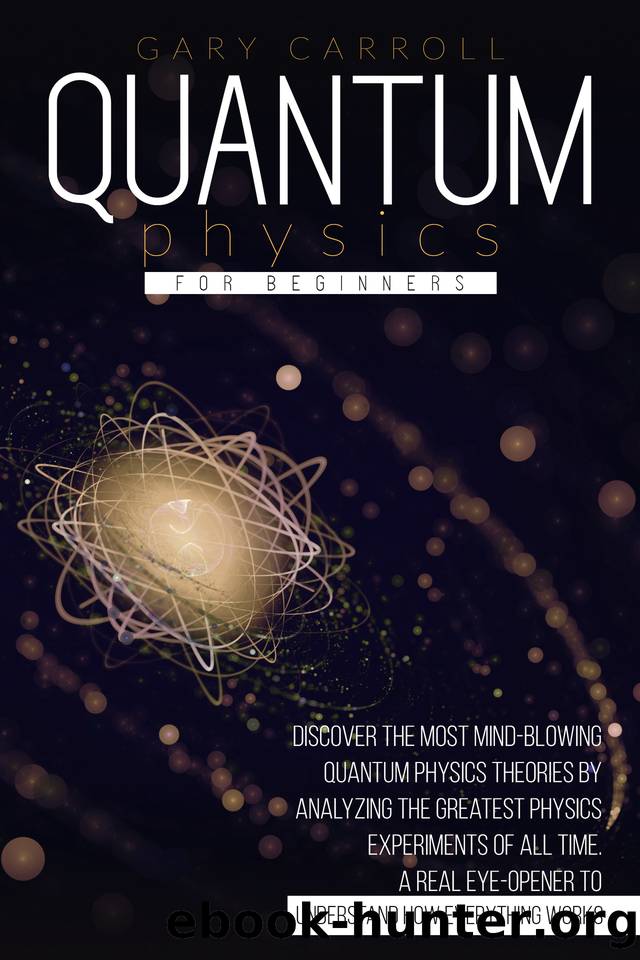Quantum Physics for Beginners: Discover the Most Mind-Blowing Quantum Physics Theories by Analyzing the Greatest Physics Experiments of All Time. A Real Eye-Opener to Understand How Everything Works by Carroll Gary

Author:Carroll, Gary [Carroll, Gary]
Language: eng
Format: epub
Published: 2020-11-27T16:00:00+00:00
Chapter 14: Riding The Wave Function
According to experts in physics, light can either be a particle or a wave. Here is how we decided that light is either a particle or a wave.
Light as a wave
Light can be labeled as an electromagnetic wave in that a changing electric field forms a changing magnetic field. In turn, the changing magnetic field further creates a changing electric field, and that is what is simply termed as light.
In contrast with many other waves like water and sound waves, light does not require a medium to wave in.
Light as a particle
Some scholars have come up with the notion that light is also a particle. Light can be seen as individual things, and this makes for particles.
In summary, light a particle or a wave is one challenging question that answer is not definite. In some circumstances, light can act as a particle, while in other circumstances, light actually acts as a wave.
Meanwhile, some things may go wrong with the assumption that light is either a particle or a wave.
Here are some of the points that illustrate that there is something wrong with both assumptions:
Gravity: The gravitational force model works when it is close to the surface of the planet earth.
Momentum: This is another point showing something wrong with light being either a particle or a wave. At lower speed, the model of non-relativistic and better momentum works together. However, if the proton goes way fast, both the better and non-relativistic models will no longer work out.
What is a wave function?
A wave function is referred to as the function that shows the chance of a particleâs quantum state as a function of time, spin, momentum, or position.
The variable commonly knows wave functions.
Furthermore, a wave function can be used to show the chance of discovering or locating an electron within a matter-wave. The wave function, which has an imaginary number, is always squared to produce a correct number solution to carry this out.
Also, the chance of an electron staying within a particular position can then be checked. The wave function was brought into existence by a well-known scientist known as Erwin Schrodinger in 1925.
Whatâs more? Wave function carries vital information that concerns the electro and its link with the wave function and how we get the angular momentum, orbital orientation, and the electronâs energy.
Additionally, the wave function can either be negative or positive. The negative or positive sign is crucial when calculating. In fact, it is also vital whenever the wave functions of two or more atoms join together to create a molecule.
The wave functions that have similar signs will interfere constructively, resulting in the chance of bonding. On the other hand, the wave functions that do not have similar alerts will interfere destructively.
Due to Schrodingerâs equation, scientists were then suitable to know the wave functions for electrons in molecules and atoms.
Initially, many scientists thought the wave function represented where a photon (or another particle) is spread along with its wave. For example, they thought that perhaps 60% of a photon's energy is in one spot, plus 30% adjacent, and 5% a bit farther, etc.
Download
This site does not store any files on its server. We only index and link to content provided by other sites. Please contact the content providers to delete copyright contents if any and email us, we'll remove relevant links or contents immediately.
The Complete Stick Figure Physics Tutorials by Allen Sarah(7264)
Secrets of Antigravity Propulsion: Tesla, UFOs, and Classified Aerospace Technology by Ph.D. Paul A. Laviolette(5237)
Thing Explainer by Randall Munroe(3849)
The River of Consciousness by Oliver Sacks(3498)
The Order of Time by Carlo Rovelli(3097)
How To by Randall Munroe(2969)
A Brief History of Time by Stephen Hawking(2911)
I Live in the Future & Here's How It Works by Nick Bilton(2900)
The Great Unknown by Marcus du Sautoy(2612)
What If?: Serious Scientific Answers to Absurd Hypothetical Questions by Randall Munroe(2587)
Midnight in Chernobyl by Adam Higginbotham(2432)
Blockchain: Ultimate Step By Step Guide To Understanding Blockchain Technology, Bitcoin Creation, and the future of Money (Novice to Expert) by Keizer Söze(2409)
Networks: An Introduction by Newman Mark(2303)
The Meaning of it All by Richard Feynman(2268)
Easy Electronics by Charles Platt(2252)
The Tao of Physics by Fritjof Capra(2204)
Midnight in Chernobyl: The Untold Story of the World's Greatest Nuclear Disaster by Adam Higginbotham(2126)
When by Daniel H Pink(2057)
Introducing Relativity by Bruce Bassett(2048)
